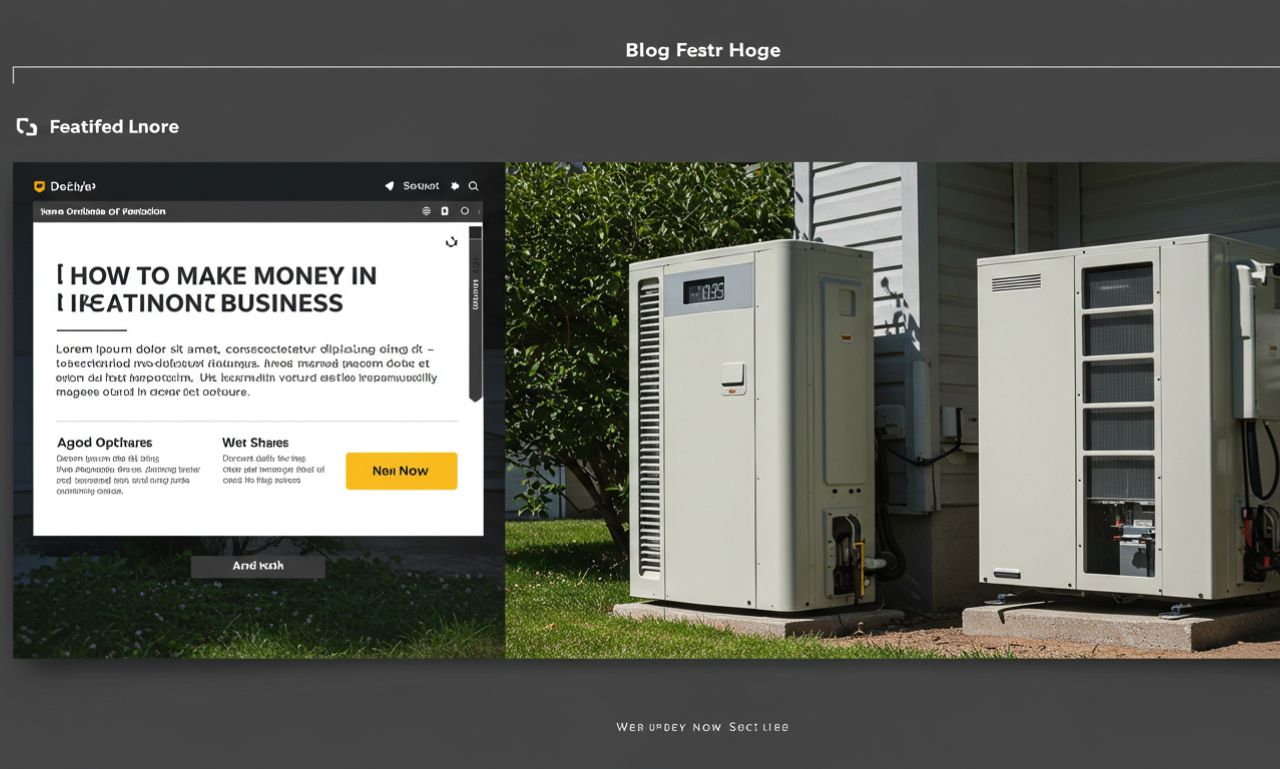The heating, ventilation, and air conditioning (HVAC) industry isn’t just about fixing broken furnaces or installing air conditioners—it’s a $130+ billion market in the U.S. alone and growing worldwide. With rising demand for energy-efficient systems, smart HVAC technologies, and year-round climate control, there’s never been a better time to turn HVAC skills into a profitable business.
But success doesn’t come from technical expertise alone. To make money in the heating and air conditioning business, you need a smart strategy that combines service quality, marketing, financial planning, and customer trust.
Below, we’ll break down the best ways to increase profitability, scale your HVAC company, and thrive in this competitive industry.
Why the HVAC Industry is Profitable
Before diving into growth strategies, it’s important to understand why HVAC is such a lucrative field:
-
Recurring demand – Systems require regular maintenance, seasonal checkups, and repairs.
-
High-ticket installations – Residential installations can cost $5,000–$12,000, while commercial systems can reach six figures.
-
Energy-efficiency incentives – Tax credits and rebates drive customers toward upgrades.
-
Smart home trends – Demand for connected thermostats, sensors, and automation continues to rise.
According to the U.S. Bureau of Labor Statistics, HVAC employment is projected to grow by 6% through 2032, meaning consistent opportunities for skilled entrepreneurs.
Strategies to Make Money in Heating and Air Conditioning
1. Offer a Full Range of Services
Diversify revenue streams by expanding beyond installations and repairs:
-
Maintenance contracts – Provide quarterly or biannual service packages.
-
Indoor air quality solutions – Sell add-ons like humidifiers, purifiers, and UV lights.
-
Smart thermostat installation – Upsell connected devices (Nest, Ecobee, Honeywell).
-
Commercial HVAC services – Target offices, restaurants, and warehouses.
This not only boosts profits but also builds long-term client relationships.
2. Price Your Services Strategically
Undervaluing your work can hurt long-term growth. Instead:
-
Benchmark pricing against local competitors.
-
Use tiered service packages (basic, standard, premium).
-
Offer financing options for big-ticket installations.
-
Factor in rising costs of refrigerants, energy regulations, and labor shortages.
A simple way to stand out is to guarantee transparent, upfront pricing—something customers value highly in an industry where hidden fees are common.
3. Invest in Local SEO & Digital Marketing
Customers turn to Google when their air conditioning breaks down in the middle of July. That means you need strong HVAC digital marketing strategies:
-
Local SEO: Optimize Google Business Profile, get listed in local directories, and gather 5-star reviews.
-
Content marketing: Publish blogs like “How to Choose the Right Air Conditioner Size” or “Signs Your Furnace Needs Repair.”
-
PPC ads: Target emergency services like “24-hour AC repair near me.”
-
Social media: Showcase before/after projects and client testimonials.
Pro Tip: Video demonstrations of maintenance tips or installation walkthroughs build trust and authority.
4. Build Recurring Revenue with Service Agreements
One of the smartest ways to make steady money in HVAC is by selling maintenance contracts. These keep cash flowing during slower seasons and reduce customer churn.
| Plan Type | Example Price | Benefits for Customers | Benefits for Business |
|---|---|---|---|
| Basic | $199/year | Annual inspection, filter change | Steady cash flow |
| Standard | $299/year | Biannual tune-ups, priority service | Repeat business |
| Premium | $499/year | Full coverage, discounts on repairs | Higher margins |
5. Upsell Energy-Efficient & Smart Solutions
Today’s customers want lower utility bills and eco-friendly systems. Upselling to:
-
Energy Star-certified HVAC systems
-
Ductless mini-splits
-
Zoning systems
-
Smart thermostats & sensors
…can increase your profit margins while positioning your business as forward-thinking.
6. Train & Retain Skilled Technicians
The HVAC technician shortage is real. To stay ahead:
-
Offer competitive wages and benefits.
-
Provide ongoing training for new refrigerant rules and smart tech.
-
Build a strong company culture that values safety and professionalism.
Happy technicians mean satisfied customers—and fewer costly callbacks.
7. Expand Into Commercial Contracts
While residential services drive steady income, commercial contracts offer larger, long-term projects. Examples:
-
Hospitals, schools, and hotels needing central air systems.
-
Office buildings requiring maintenance contracts.
-
Industrial facilities with custom HVAC solutions.
Commercial work often leads to repeat contracts and multi-year partnerships.
Common Mistakes That Kill HVAC Profits
-
Ignoring digital marketing and relying solely on word-of-mouth.
-
Underpricing services to beat competitors.
-
Failing to upsell or diversify service offerings.
-
Neglecting employee training and customer service.
Avoiding these pitfalls ensures steady growth.
FAQs About Making Money in HVAC
1. How profitable is the heating and air conditioning business?
Profit margins typically range from 8–15%, with higher margins possible for businesses offering maintenance contracts and smart system installations.
2. How much does it cost to start an HVAC business?
Startup costs vary but usually range from $10,000 to $100,000, covering licensing, tools, insurance, and marketing.
3. What’s the best way to get HVAC customers fast?
Invest in Google Local Services Ads, offer emergency repairs, and partner with real estate agents and property managers.
4. Do HVAC companies make money year-round?
Yes—though summer and winter peak, service contracts and indoor air quality products help maintain year-round cash flow.
5. Is HVAC a good business to start in 2025?
Absolutely. With smart home adoption and green energy regulations, HVAC demand is expected to rise steadily.
Conclusion: Turning HVAC Knowledge Into Profits
The HVAC industry is built on necessity—every home and business needs heating and cooling. But to truly make money in the heating and air conditioning business, you need more than technical skills.
By offering a diverse range of services, investing in digital marketing, building recurring revenue, and staying ahead of smart technology trends, you can create a business that not only survives—but thrives.

